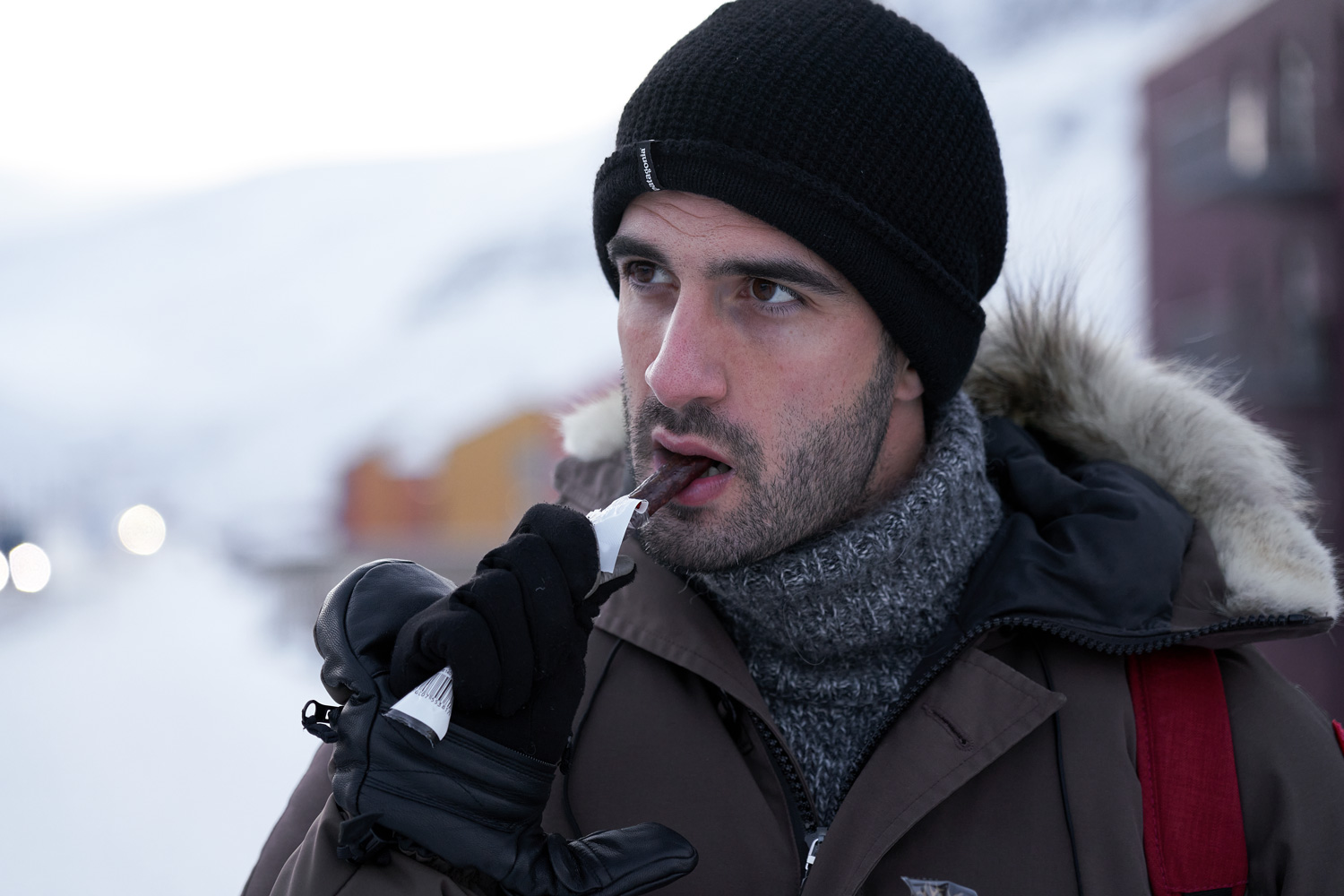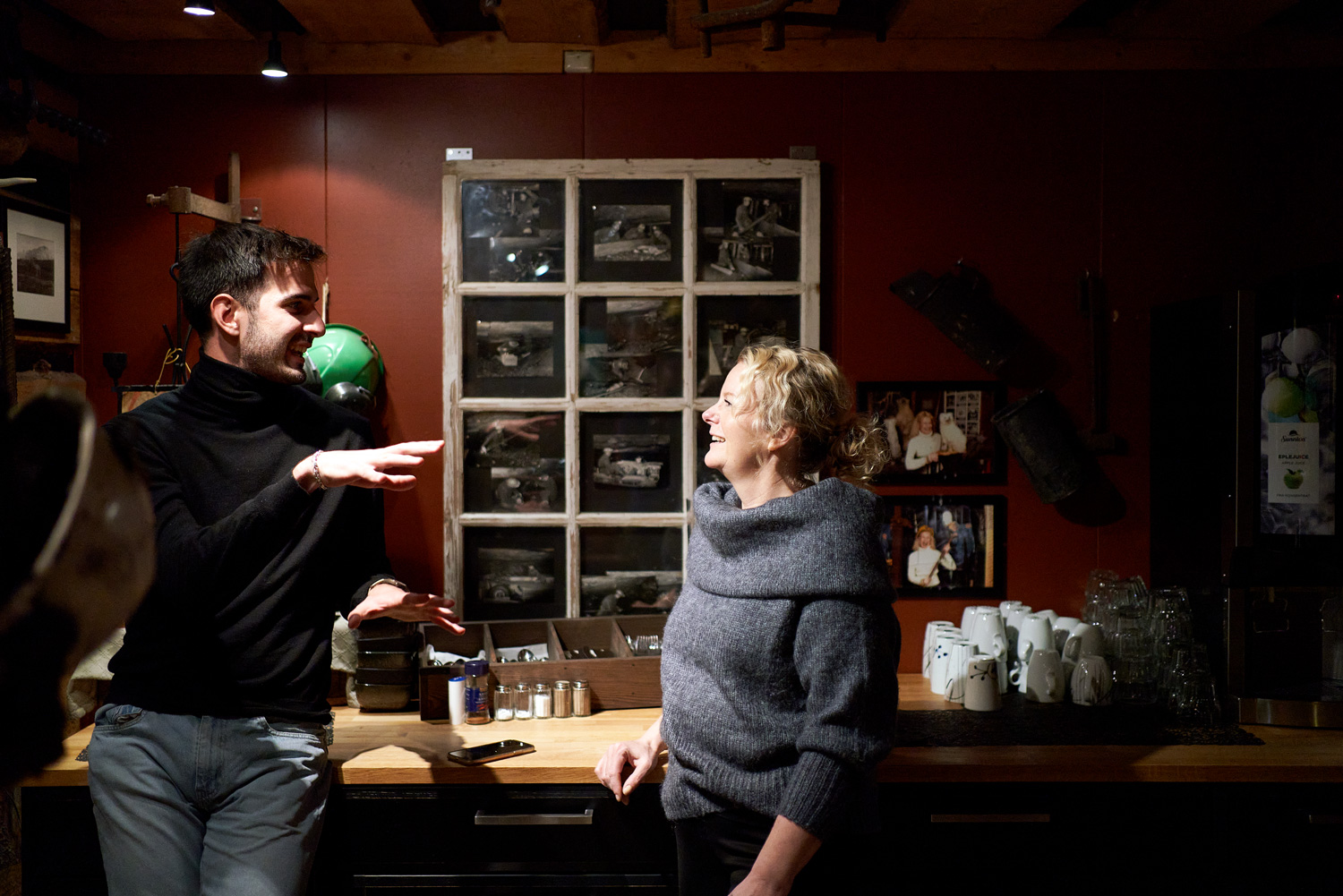This article originally appeared on VICE Italy.
Halfway between Norway and the North Pole, you’ll find the Svalbard Islands. This snowy archipelago is home to more polar bears (3,000 or so) than it is people (2,500). It’s also the northernmost inhabited place on the planet.
Videos by VICE
It’s important to remember a few key things about life up here. It is cold – it was -11°C on most days of our trip in late October– and it is dark. Between November and February, the sun doesn’t rise above the horizon.
If you’ve heard of Svalbard, it is likely thanks to the island’s Seed Vault. It opened on the island of Spitsbergen in 2008, the vault now houses just over a million crop samples. Think of it as an agricultural future-proofing service: The samples held there will help us feed ourselves in the event of global seed crises.

We hadn’t travelled this far to explore the vault, though. No, we were in Svalbard to check out the food scene in the most northern town on Earth. We stayed in Longyearbyen, the archipelago’s main town. As you’d expect, the place is determined to make the most of its claim to fame. Pretty much every business in town announces itself as the northernmost something: walk down the high street and you’ll see the northernmost supermarket in the world, next to the northernmost hairdresser, next to the northernmost museum, next to the northernmost food truck.
Hoping to get a grasp on what authentic Arctic cuisine consists of, we targeted three northernmost places – the grocery store, a traditional local restaurant and a luxurious one.

First, we made our way to the supermarket. Co-op is the chain of choice up at the top of the world and there was a far wider range of products on offer than we’d imagined. Who knew it would be so easy to get decent fruit and veg in the North Pole? Past the produce aisle, a pair of local delicacies caught our eye: reindeer jerky and smoked whale.
The vacuum-packed sticks of reindeer – featuring added salt, pepper, and speck – were fine. Don’t pick one up expecting huge, bold flavours. With my eyes closed, it was hard to distinguish it from your standard smoked, shrink-wrapped sausage, though there was admittedly a thrill to be had in tucking into Rudolph a few steps away from Santa’s spiritual home.
The whale was a different story. It tasted strange, like fish that somehow had the aftertaste of steak. Just as confusingly, it was both tender and chewy – and really salty. Paired with a Norwegian cheese, recommended by the supermarket’s in-house butcher, it was an oddly successful snack.



Having checked out some of the more unusual supermarket offerings, it was time to dine in like a local. The trouble was that most of the restaurants in Longyearbyen dished up the kind of pizzas and burgers you can find anywhere on Earth. What we wanted was a more authentic dining experience.
Locals told us to pay a visit to Mary Anne’s Polarigg, a family-run restaurant. It’s worth noting at this point that very little vegetation grows in Svalbard, with the exception of a handful of very small plants and mushrooms that burrow up from the soil annually in August and September. This is no place for the vegetarians and vegans of the world.
Menus across the area are full of reindeer, seal, whale, and ptarmigan, the only bird which makes the archipelago its home all year round. The restaurant owner assured us that everything was locally sourced and that “eating these animals is the most natural thing possible here”.
Hunting is, in fact, very regulated. Every resident citizen has the right to kill one reindeer a year for private consumption, while some hunters have a limit of 25. Basically, everything that is hunted on Svalbard is eaten on Svalbard.

The reindeer was served with overcooked vegetables, but it was definitely tastier than the stick I had before. The seal was the house speciality. The staff were keen to point out it is “very different from anywhere else [on Earth].” Here, in fact, seals eat shellfish, while in Greenland and the rest of Norway, they feed on fish. This makes them taste similar to whales, albeit a tiny bit stronger and more bitter. So strong, in fact, that when the head chef arrived in Longyearbyen and tasted the seal for the first time, he wasn’t entirely certain that he wasn’t eating beef.


Next up was a meal at Huset Svalbard, the only restaurant town with an Instagram account. The head chef here keeps things interesting by switching up the menu every three months, but there was still room for reindeer when we paid a visit. This time it was smoked reindeer heart pie, served on a local mushroom mousse. The chef had picked the mushrooms himself the month before. Every other vegetable had to be ordered in from the mainland, and it can take up to a month for certain deliveries to arrive.
Chef Frederik doesn’t think there’s such a thing as Arctic cuisine – what he cooks is just what they eat here in Svalbard. The range might be limited, but that’s an opportunity for chefs like him to be creative with their cooking. The traditional food of Svalbard can only be found on the island, and there’s no export market for local products.


The next course involved more reindeer – reindeer carpaccio wrapped in a reindeer roll-up with dried seaweed and salmon caviar. Bread and butter topped with grated reindeer leg was served as a side. And yes, I asked twice to be sure: A portion of the reindeer’s front leg is grated on top of the butter.
The one thing Frederik won’t serve at Huset Svalbard is whale. That’s because the only local fisherman who procures meat for the community uses dynamite as part of his fishing process, and Frederik doesn’t agree with his methods.

Frederik had to cut our private dining experience short as the evening’s first customers were starting to arrive for dinner. On our way out we asked the chef to give us three adjectives to describe Svalbard’s cuisine. “Challenging. Limiting. Liberating,” he said.








